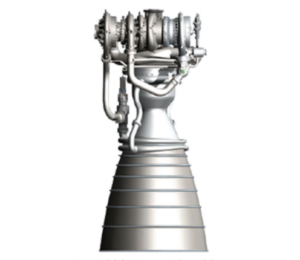Application of nickel copper alloy in space
As we all know, about 70% of the world’s nickel production is used in stainless steel production. Stainless steel was independently discovered by some researchers in 1912, but corrosion-resistant nickel base alloy was discovered earlier. In 1906, a nickel-copper (Ni Cu) alloy developed by inco was patented. The alloy has now developed into a group called Monel ® Two thirds of the nickel alloy is nickel and one-third is copper.
The strength of the nickel-copper alloy is higher than that of pure nickel, and it shows excellent corrosion resistance in a variety of non-oxidizing acid and alkaline environments (including rapidly flowing seawater). Nickel copper alloy can well withstand various concentrations of hydrofluoric acid in the temperature range up to the boiling point, and can withstand various forms of sulfuric acid and hydrochloric acid under reducing conditions.
characteristic
Nickel copper alloy also has excellent oxidation resistance (combustion resistance) in a high oxygen environment, and has excellent mechanical properties below zero and up to 550 ℃ (1020 ℉). Nickel copper alloys are easily made by hot working, cold working, machining, and welding. The most famous type of nickel-copper alloy is alloy 400 (n04400). Alloy 400 can only be hardened by cold work, but after the addition of aluminum and titanium in 1924, a higher strength age hardening product, K-500 (n05500), was produced. adopt γ For the deposition of phase particles, the yield strength reached 690 MPa (100 kilopounds per square inch), which was about three times higher than that of alloy 400 (n04400).

Space
Nickel copper alloys exist in pipes, bars, and wires for various space applications. The natural flame resistance of nickel-copper alloy in oxygen, its excellent properties at temperatures below zero, and the high strength of K-500 make this alloy an important material for the oxidizer side turbopump of oxygen-rich liquefied fuel rocket engines (such as blue origin be-4).
“Blue origin” uses three-dimensional additive manufacturing to manufacture many key components of ox booster pump (OBP). Its shell is a printed aluminum part, and all stages of the turbine are printed with K-500. Figure 1 shows the shell of the blue origin be-4ox booster pump. This manufacturing method can integrate complex internal flow channels into the shell, while it is much more difficult to manufacture this kind of shell by conventional methods. The nozzle and rotor of the hydraulic turbine are also made of three-dimensional printing, and the required fit can be achieved with only a small amount of machining.
Even today, nickel-copper alloys developed more than a century ago play a crucial role in high-demand frontier applications.
